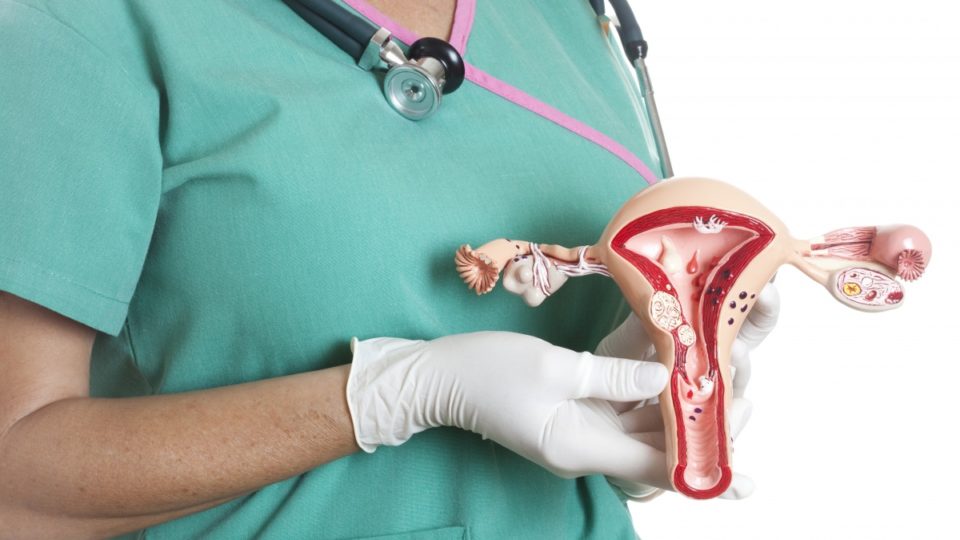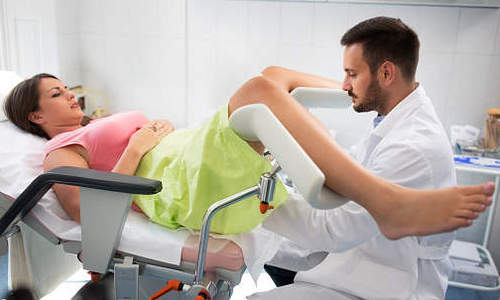The uterus is an unpaired organ, consisting of smooth muscles, responsible for carrying and developing the embryo. Uterus location: pelvis. Near the uterus is the bladder and rectum. The uterus is rounded down, passing into the cervix. This is a mobile organ. At the same time, its position directly depends on the position in which the bladder and rectum are located.

Manual examination of the uterine cavity is not possible if the bladder is full. Also, in preparation for the examination by a specialist, it is necessary to empty the rectum. The presence of feces in it will not allow the specialist to conduct a full inspection.
What is a manual examination of the uterine cavity?
Inspection without involving any foreign objects and technologies - manual inspection. This is an operation that requires maximum hygiene. That is, before starting this procedure, the doctor must carefully treat the hands and uterine cavity with an antiseptic.
A specialist conducts such an examination in the presence of certain indications. A manual examination of the uterine cavity after childbirth is also shown.

Indications for manual examination of the uterus
In the postpartum period, a manual examination is mandatory. Doctors pay special attention to women in childbirth, in whom the placenta does not leave the organ cavity for 30 minutes. This phenomenon is considered an indication for the separation of the placenta manually.
Also, experts distinguish such indications for a manual examination, such as:
- bleeding in the uterine cavity;
- postoperative period;
- delayed placenta inside the uterus after childbirth;
- fibroids;
- scarring of the organ;
- defects in the development of the amniotic membrane.
Experienced specialists know that a manual examination of the uterine cavity should be of high quality. To do this, you need to run your hand in a circle, feeling the surface of the organ. Otherwise, there is the likelihood that a well-examined, there will be only one side - the one that was under the palm of a doctor.

After a full manual examination, women who have just given birth are often prescribed additional curettage. This procedure is needed in order to completely clean the uterus from the remains of the placenta. Indications for a manual examination of the uterus may be more serious, but in such cases an additional examination is prescribed, and then treatment. It is impossible in such cases to self-medicate.
It is necessary to seek the help of qualified specialists, and clearly follow their recommendations.
Technique for manual examination of the uterine cavity
Before proceeding with the examination of the patient, the doctor must treat the hands with an antiseptic. Also treat the surface of the examined organ - the uterus. Then the doctor puts on a sterile glove on his right hand and inserts it into the organ cavity.

At the same time, he holds her bottom with his left hand. If the doctor examines the patient who has just given birth, he must check the uterus for placental residues and remove them if necessary. Depending on the condition of the patient, the doctor decides on pain relief before the procedure.
If an analgesic was administered before childbirth, the patient does not need additional anesthesia. Upon completion of the examination, oxytocin must be administered to improve uterine contractility. This should be done until the moment when the doctor removes his hand from the examined organ.
Complications
One of the main and most serious consequences with a manual examination of the uterine cavity may be an increase in the placenta to the walls of the organ. Then the specialist, when trying to separate it manually, should be prepared for the fact that bleeding may open, which often leads to sad consequences due to the negligence of doctors.
To avoid this, an experienced doctor recommends the patient a surgical intervention to remove the uterus. Such an operation is not a sentence to date. And there are many ways to preserve the genital organ. However, you need to carefully monitor women's health and regularly undergo examination by a gynecologist and other specialists.
Prevention
Preventive measures will also help to avoid many troubles related to women's health. For example, periodically need to take vitamin complexes that are aimed at maintaining women's health. Also today, special exercises that strengthen the uterus and its neck are very popular.